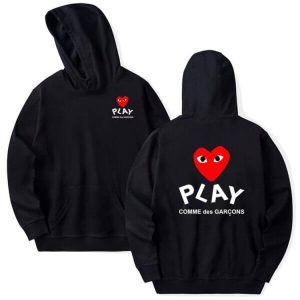In the ever-evolving world of fashion, where trends shift at the pace of a viral post and aesthetics are often dictated by mass appeal, Rei Kawakubo stands as a singular force. The founder and creative mastermind behind Comme des Garçons, Kawakubo has spent decades challenging what fashion is—and more importantly, what it isn’t. Through radical design and a philosophical comme des garcon approach to clothing, she has redefined beauty, identity, and the very structure of garments. Comme des Garçons is not just a fashion brand; it is a cultural phenomenon born from the spirit of anti-fashion.
Rei Kawakubo founded Comme des Garçons in Tokyo in 1969, launching it officially as a fashion label in 1973.
From the beginning, her designs stood apart. While the fashion world was fixated on form-fitting silhouettes, bright colors, and conventional notions of beauty, Kawakubo offered something entirely different: shapeless garments, unfinished hems, asymmetrical cuts, and a monochromatic palette. Her early collections emphasized a rejection of Western ideals, often embracing the “ugly” or “imperfect” as a deliberate aesthetic. Her philosophy was not about clothing the body in traditional elegance, but rather provoking emotion and thought through discomfort, abstraction, and experimentation.
Kawakubo’s 1981 debut at Paris Fashion Week marked a seismic shift in the global fashion industry.
Presented in stark black, with holes and distressed fabrics, her collection earned the nickname “Hiroshima chic” from critics who didn’t yet understand the language she was speaking. Yet even with the initial backlash, it was clear something groundbreaking had occurred. Comme des Garçons wasn’t simply presenting a new look—it was presenting a new way of thinking. Kawakubo challenged everything the fashion establishment stood for, confronting deeply embedded norms and redefining what clothing could communicate.
At the heart of Kawakubo’s work is a deep philosophical core.
She has famously said that she is not interested in making clothes that are beautiful, but in making clothes that make people feel something. Her garments are often sculptural, theatrical, and enigmatic. Pieces may obscure rather than highlight the human form, with padded hips, distorted shoulders, or layered constructions that distort the body’s natural lines. In doing so, she dismantles the idea that clothes must be flattering or wearable in any conventional sense. Her collections are not commercial in the traditional sense—they are cerebral, challenging, and often demand interpretation.
Comme des Garçons has also cultivated a strong cult following and spawned
numerous sub-labels and collaborations. From the avant-garde creations of the mainline to the more accessible PLAY line with its iconic heart-with-eyes logo, Kawakubo’s brand has achieved commercial success while staying uncompromisingly experimental. Collaborations with brands like Nike, Supreme, and H&M brought elements of her vision into mainstream consciousness, yet even in those partnerships, she retained creative control, refusing to dilute her aesthetic for mass appeal.
Beyond clothing, Kawakubo’s anti-fashion stance extends to the way she conducts business.
She rarely gives interviews and often avoids the limelight, allowing her work to speak for itself. In a world obsessed with celebrity designers and social media branding, her anonymity is a powerful statement. Her Dover Street Market concept stores are another example of her avant-garde philosophy, designed not just to sell clothes but to create an immersive experience that blurs the line between fashion, art, and commerce.
Kawakubo’s influence can be felt across generations of designers who cite her as a key inspiration.
Designers like Martin Margiela, Yohji Yamamoto, and Rick Owens have echoed elements of her deconstructivist approach, while others have borrowed her use of asymmetry, layering, and abstraction. But no one has matched the purity of her vision. While trends come and go, Rei Kawakubo remains steadfast in her commitment to challenge the industry CDG Long Sleeve from within, continually pushing boundaries with each collection.
Comme des Garçons is not for everyone—and that is precisely the point. It stands as a rebuke to the commodification of fashion, a rebellion against the notion that beauty must conform to expectation. For Rei Kawakubo, fashion is not about following rules, but about breaking them. It is about creating something that cannot be defined, predicted, or neatly categorized.
In a world where much of fashion is about fitting in, Comme des Garçons invites us to stand apart. It asks not what is trendy, but what is true. And through Rei Kawakubo’s radical vision, we are reminded that the most powerful statements are often made in silence, in black, and in defiance.






